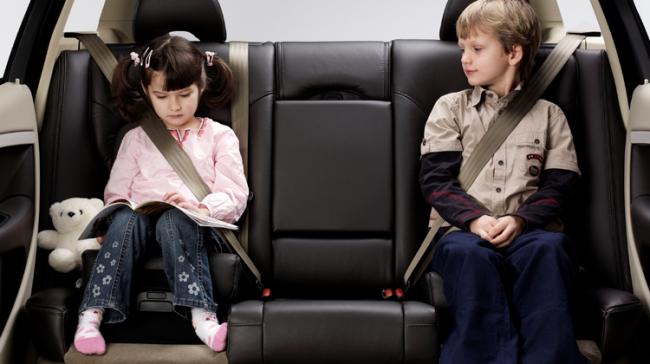Child Safety in Volvo Cars

With the rise in the number of road accidents worldwide, safety is a primary factor for everyone and especially when it involves children. While purchasing a car, people are usually more conscious about the safety and quality features that it offers.
At Volvo, our core values include – safety, quality and environment. In fact, Volvo Cars is a leader in child safety and thus, already responds well to the demands of the people. Volvo has been a safety pioneer since it came up with the world’s first laminated windscreen in 1944 and then went on to introduce so many safety firsts, from the three-point seat belt to side airbags.

We were the first car maker to actively test child seats in crash tests in the early 1960s, launching a range of three new child seats with a focus on design, comfort and convenience. Thus,Volvo Cars’ heritage of development, testing and clear installation and usage guidelines for parents is unparalleled.
Today, when it comes to child safety in cars, Volvo is regarded as the benchmark. This has been a result of more than half a century of hard work, continuous testing and meticulous research. And it’s something we’re very proud of. So when the time came to develop the new generation of Volvo Cars child seats, we took fifty years of knowledge and expertise and used it to create a range of child seats that are safe, comfortable and luxurious.
We focused on three key benefits — making it easier to get the child into and out of the child seat from an ergonomic and comfort perspective; providing the child with a safe rearward-facing-seating position that enables it to keep eye-contact with either the driver or the rear passenger; and, of course, including enough storage for those vital child accessories, such as diapers, bottles, wipes and so on. Our aim is to ensure that young children travel in the safest manner possible, depending upon their size and age.
The Volvo Cars’ Traffic Accident Research Team has been collecting information on Swedish road crashes involving Volvos since the early 1970s. This information helped us develop the program we use at our test centre in Gothenburg, Sweden. Testing our child seats along with our cars allows us to carefully monitor how each child seat reacts in a real-life car environment and then we tailor our designs accordingly.
The Excellence Child Seat Concept, which also provides a function to help small children safely lean back and sleep, is based on Volvo’s clear safety position; that small children should travel rearward facing as long as possible (at least up to the age of 3 or 4). This is primarily due to the lack of muscular strength in the necks of small children and the disproportionate head size and weight in relation to the body.
We also study how the appearance and performance of each child seat is affected by everyday usage in different conditions, e.g. cold, humidity etc. Further testing is carried out on the materials used to help reduce in-car emissions and ensure that all child seats are free from harmful substances such as nickel and chromium.

Besides this, we also understand that many people find child safety in cars a complex and sometimes confusing subject. We have focused for many years on communicating clear guidelines around how child seats should be used and the correct way to install them. We believe the more awareness we create about the issue of child safety, the better it will be for parents as they will be making better and informed decisions while buying a new family car. Safety is not a luxury, it is a necessity. It is about time we changed our outlook towards the same.
Also Read: Volkswagen Partners With Microsoft To Develop Connected Cars





